 Click To Return To Main Page |
 |
||||||||
 News |
 Eco-Journalists |
 Articles |
 Games |
 Links |
 Facts 'n Fun |
 Email Us |
 About Us |
 Guestbook |
|
|
Where Have All The Trees Gone?
When we noticed that the big gum trees were dying and that there were no new ones growing in their place, we knew there was something going on. The problem is that people see all that green stuff and think it's native Australian. We decided to take a closer look and here's what we found. 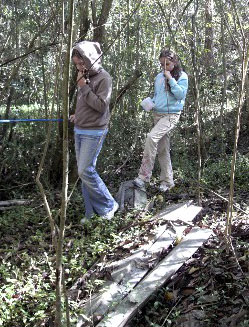 Everything green you can see here is privet!
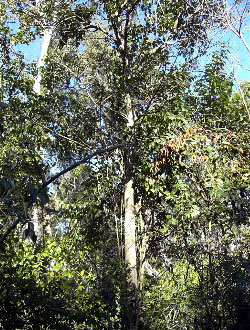
Tradescantia Fluminensis' which is better known as 'wandering jew'.
It grows on anything faster than you can blink! 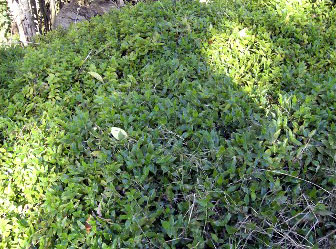 1. The first thing we noticed is that 'all that green stuff' is actually privet. A plant which was introduced to Australia and is now considered 'noxious' (harmful to our environment). It used to be very popular in England where they grow it as hedges in gardens. There, it grows very slowly....whereas, here, it grows into massive tall trees incredibly quickly.
1. The first thing we noticed is that 'all that green stuff' is actually privet. A plant which was introduced to Australia and is now considered 'noxious' (harmful to our environment). It used to be very popular in England where they grow it as hedges in gardens. There, it grows very slowly....whereas, here, it grows into massive tall trees incredibly quickly.
Because it grows quicker than any native (Australian) tree or bush, this means that it soon takes up all of the space, takes the nutrients (food) from the soil and blocks out the sun. Soon, no new trees are able to grow as they need: 1. space to grow 2. nutrients in the soil 3. sun to turn into energy through a process called 'photosynthesis' Delightful pockets of natives waiting to be rescued
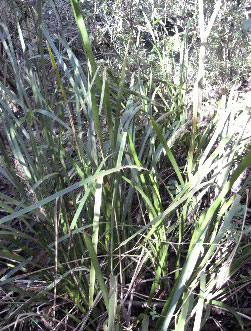 2. The second thing we discovered was that there was the odd patch of Australian native plants which we were just surviving...but they were there.
2. The second thing we discovered was that there was the odd patch of Australian native plants which we were just surviving...but they were there.
Blocked drains pump chemicals straight into bush
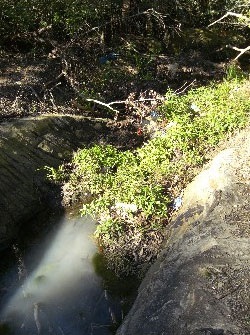 3. We tracked where the Eucalyptus trees which were dying were and we discovered that mostly they were directly below where stormwater drains had been built. These drains take the water off roads and just divert them into the bush. The water from the roads contains oil, phosphates (from fertilisers) and other chemicals. We discovered through earlier research that concrete stormwater drains put a lot of salt into the water. Australian native trees are not good at coping with phosphates.
3. We tracked where the Eucalyptus trees which were dying were and we discovered that mostly they were directly below where stormwater drains had been built. These drains take the water off roads and just divert them into the bush. The water from the roads contains oil, phosphates (from fertilisers) and other chemicals. We discovered through earlier research that concrete stormwater drains put a lot of salt into the water. Australian native trees are not good at coping with phosphates.
4. We also found that many of the stormwater drains had become clogged with litter and debris so the water was flooding and spreading. A big nest of angry bees
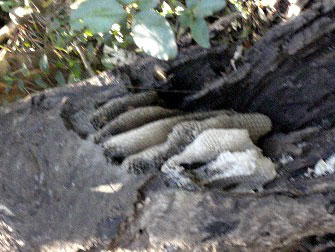 5. We found a walking track had become completely overgrown because some bees had made a nest in a log next to the path.
5. We found a walking track had become completely overgrown because some bees had made a nest in a log next to the path.
This waterfall was a real find
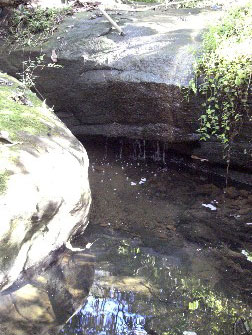 6. We also found a beautiful little stream and waterfall which has been hidden away from everyone because the privet is so thick.
6. We also found a beautiful little stream and waterfall which has been hidden away from everyone because the privet is so thick.
People dump stuff without thinking of the effect on the natural habitat
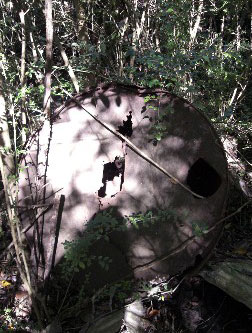
Thick orange goo drains into the waterfall from the tank
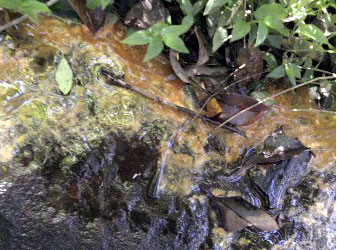 7. Near this waterfall was an old rusty boiler. The water running into the waterfall was orange and slimy. This is because the iron from the boiler is 'leaching' out and into the water. So much iron in the water is not good for the water creatures and plants.
7. Near this waterfall was an old rusty boiler. The water running into the waterfall was orange and slimy. This is because the iron from the boiler is 'leaching' out and into the water. So much iron in the water is not good for the water creatures and plants.
The health of the creek is worse than ever because of the drought
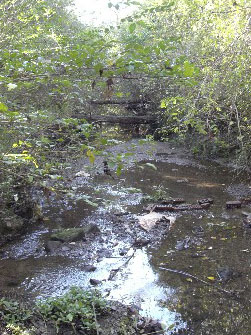 8. Cattai Creek runs at the bottom of the Reserve. Having the privet on the banks of the creek is a problem because the privet drops its seeds into the water which are then carried downstream where they grow and destroy other areas of native bushland.
8. Cattai Creek runs at the bottom of the Reserve. Having the privet on the banks of the creek is a problem because the privet drops its seeds into the water which are then carried downstream where they grow and destroy other areas of native bushland.
We really wanted to do something to help the trees and restore our local eco-system. |